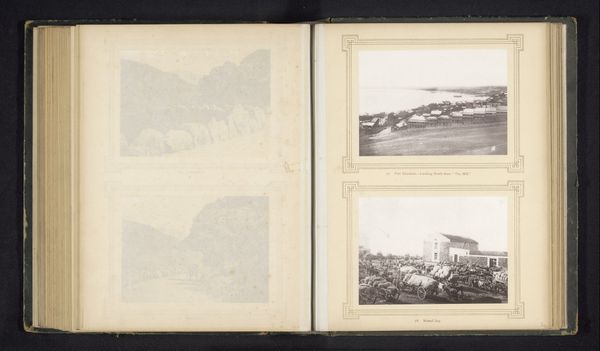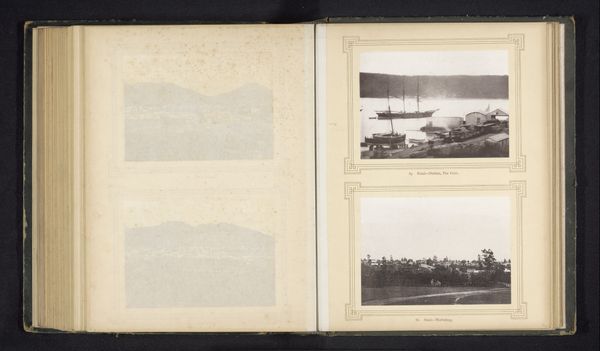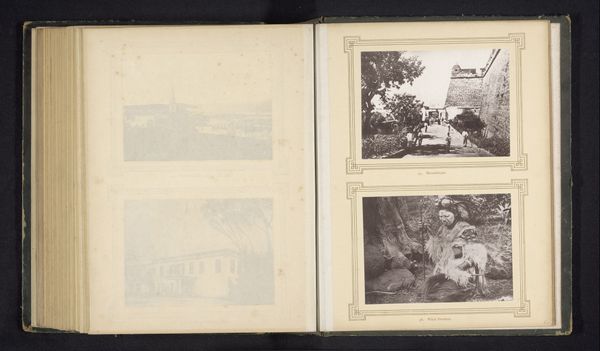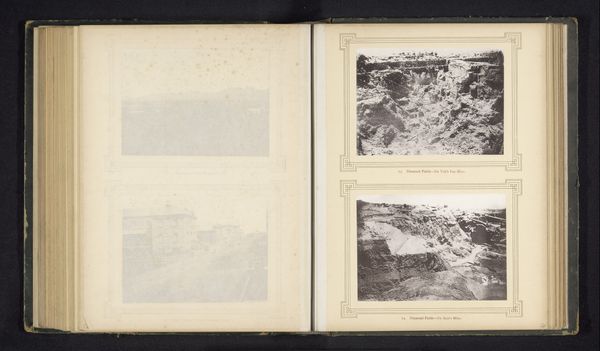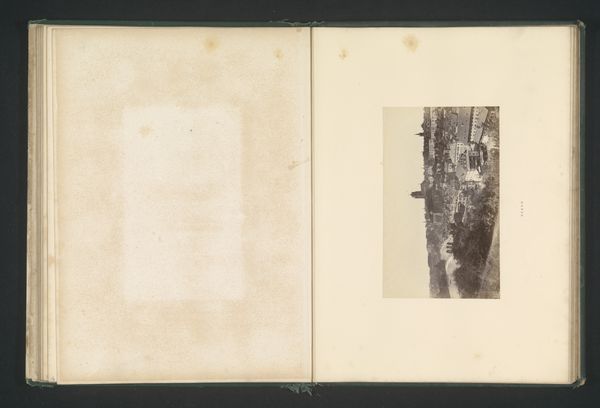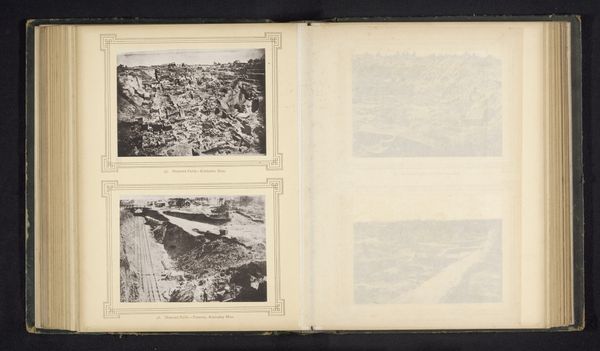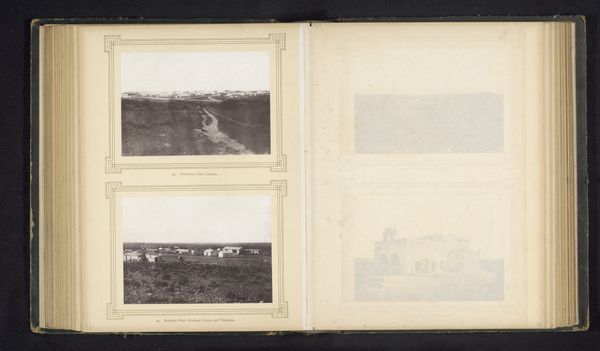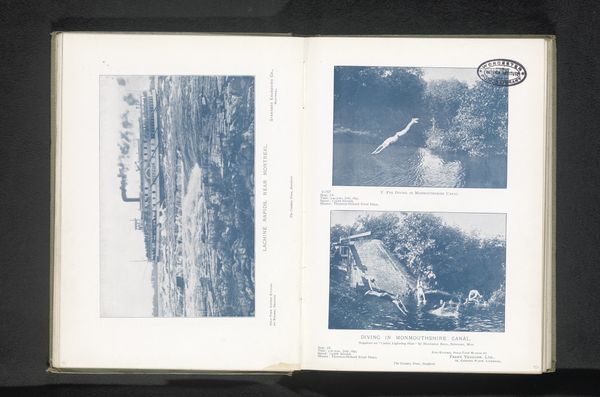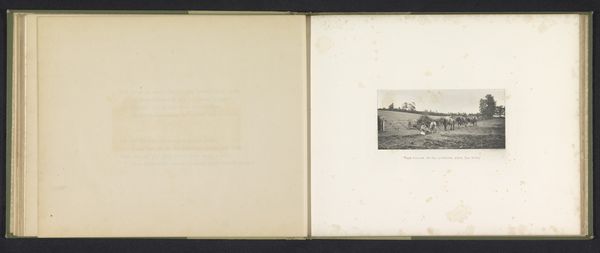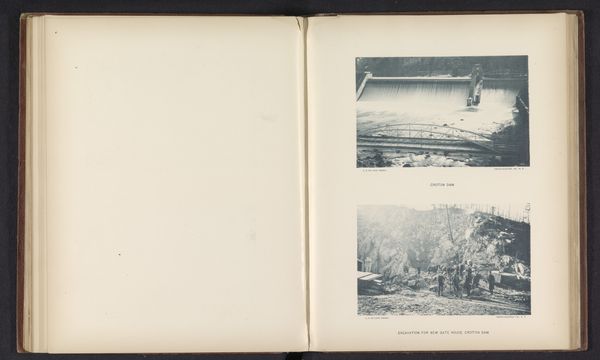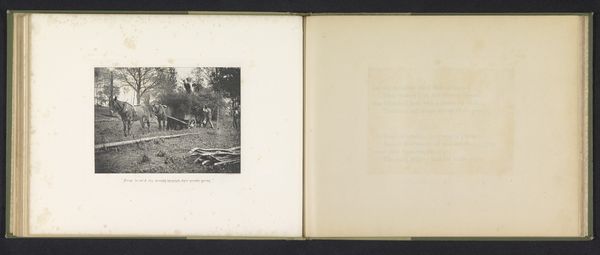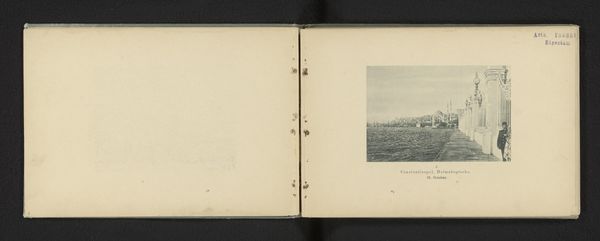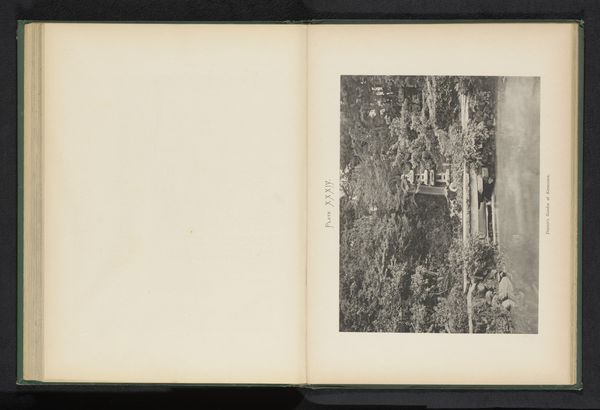![['Knysna River drift', 'Port Elizabeth-from jetty'] by Sam Alexander](/_next/image?url=https%3A%2F%2Fd2w8kbdekdi1gv.cloudfront.net%2FeyJidWNrZXQiOiAiYXJ0ZXJhLWltYWdlcy1idWNrZXQiLCAia2V5IjogImFydHdvcmtzLzdkYzA5ZDA1LTQxMjYtNDk0Ny04NWViLWVjM2I5ZTg3OWE3My83ZGMwOWQwNS00MTI2LTQ5NDctODVlYi1lYzNiOWU4NzlhNzNfZnVsbC5qcGciLCAiZWRpdHMiOiB7InJlc2l6ZSI6IHsid2lkdGgiOiAxOTIwLCAiaGVpZ2h0IjogMTkyMCwgImZpdCI6ICJpbnNpZGUifX19&w=3840&q=75)
#
aged paper
#
toned paper
#
homemade paper
#
muted colour palette
#
ink paper printed
#
white palette
#
river
#
carved into stone
#
watercolor
#
historical font
#
columned text
Dimensions: height 290 mm, width 219 mm
Copyright: Rijks Museum: Open Domain
Curator: This page comes from an album attributed to Sam Alexander. The prints you see here, labeled "Knysna River drift" and "Port Elizabeth-from jetty," date to before 1880. Editor: It’s aged beautifully, with the homemade, toned paper and muted colors creating a sepia-toned melancholic atmosphere, as if time is suspended. Curator: Indeed. Observe how the landscapes captured hold deeper symbolic weight, acting as emblems of South Africa’s complex identity at this historical moment, right on the cusp of immense social and political upheaval. These scenes almost operate like visual palimpsests. Editor: Yes, palimpsests. Note how each element—the architecture, the landscape, and what looks to be, at least on one image, like the rigging of ships and some kind of port crane—contributes to an almost perfectly balanced composition. The prints feel like meticulous exercises in geometry, divided up and framed into discreet blocks on a spread. Curator: Beyond geometry, let’s contemplate the images of the river itself, its potential for cleansing or renewal, while simultaneously mirroring the unsettling political waters that existed. Then the architectural views remind us of settlement, commerce, the imposition of a certain order. The visual encoding of power is palpable, wouldn’t you say? Editor: I see what you mean about visual power dynamics at work. Yet consider too, if you will, the use of light and shadow, its deliberate contrast that allows certain details—the curve of a roof or line of a forest, and the angles of constructed features on the other spread. Curator: Thinking of those shadows reminds me, those who owned this album and leafed through these pages saw something quite different from us, I believe. Their perception and investment in these symbolic terrains, the hopes and the inherent violence of colonial expansion—were naturally part of their own image and self-perception. It has certainly made me think about how history itself is always retold and renewed, constantly drifting in new directions. Editor: Yes, the image persists, yet perception always changes it and adds further interpretations into the mix. Thanks to our own reflections, hopefully visitors to this audio tour will regard these pieces not just for what they show but for what they hide.
Comments
No comments
Be the first to comment and join the conversation on the ultimate creative platform.
